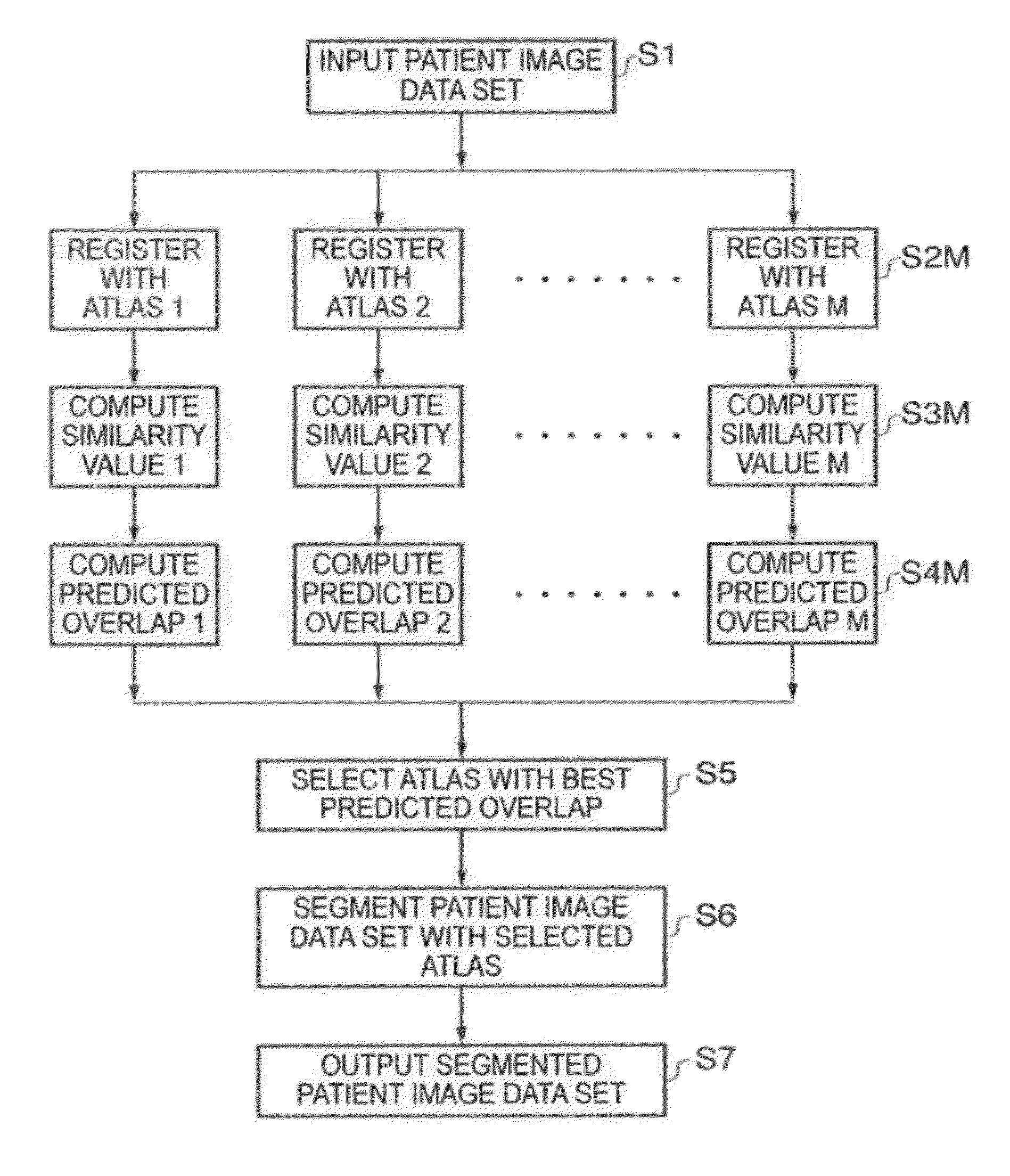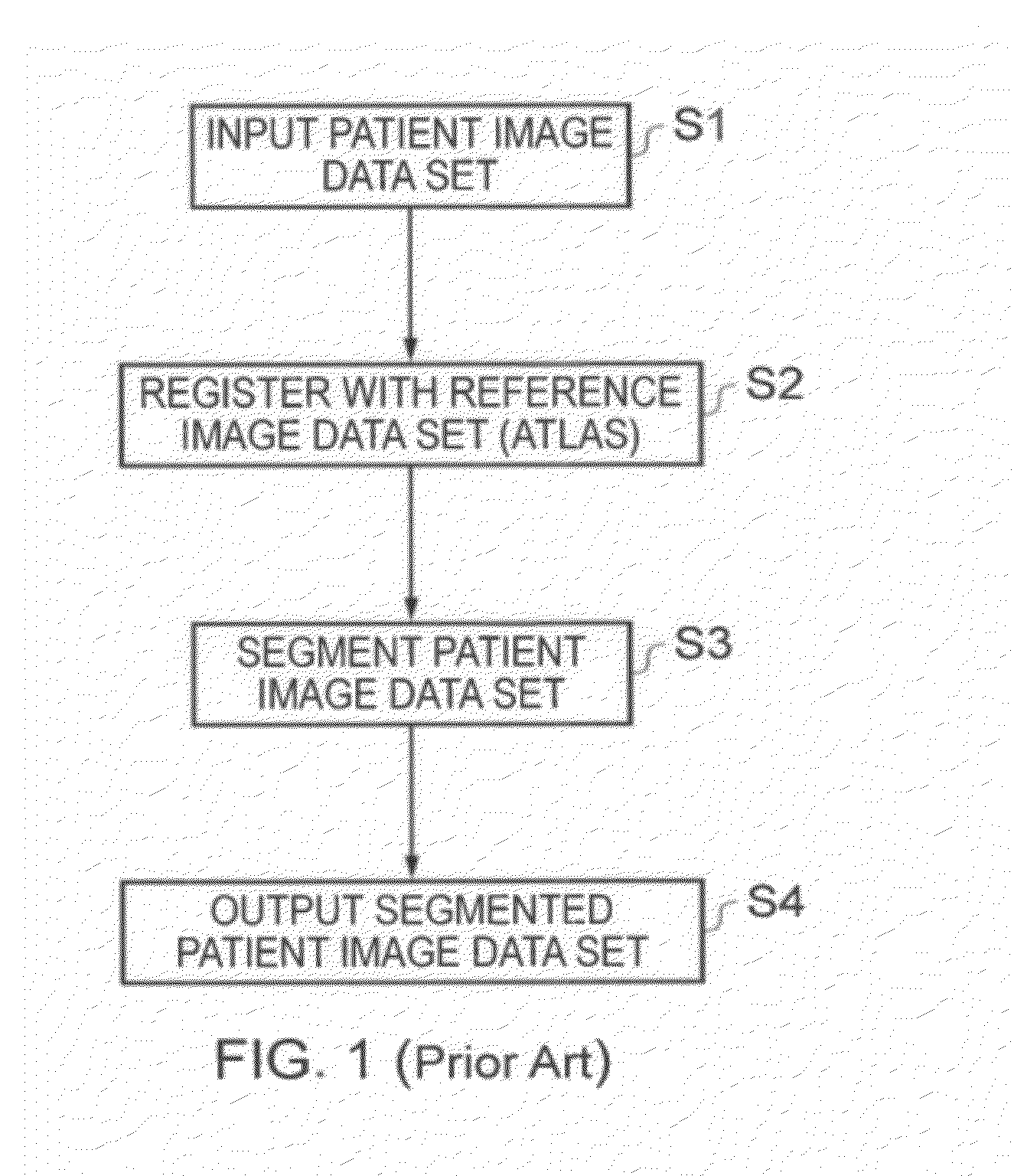Image segmentation
- Summary
- Abstract
- Description
- Claims
- Application Information
AI Technical Summary
Benefits of technology
Problems solved by technology
Method used
Image
Examples
example
[0085]An example procedure for selecting the best set of atlas data sets to use for multi-atlas based segmentation is now described.
[0086]Cardiac CT angiography (CCTA) data sets from 21 patients were used to construct the training set. The data sets represent two distinct categories of heart anatomy: patients with small cardiothoracic ratio (CTR), and patients with large cardiothoracic ratios. Data sets 9, 12, and 16-21 were identified as being from patients with large CTRs. Whole heart segmentations, represented as masks containing the heart and all its sub-anatomies, were collected by a clinically qualified individual on each of these data sets. Each data set in turn is used as an atlas to segment the heart in all the other data sets. The segmentation is performed using multi-scale rigid registration to align the volumes based on 3-D translation, anisotropic scaling and rotation, followed by multi-scale non-rigid registration, which uses mutual information to find the best deforma...
PUM
 Login to View More
Login to View More Abstract
Description
Claims
Application Information
 Login to View More
Login to View More - R&D
- Intellectual Property
- Life Sciences
- Materials
- Tech Scout
- Unparalleled Data Quality
- Higher Quality Content
- 60% Fewer Hallucinations
Browse by: Latest US Patents, China's latest patents, Technical Efficacy Thesaurus, Application Domain, Technology Topic, Popular Technical Reports.
© 2025 PatSnap. All rights reserved.Legal|Privacy policy|Modern Slavery Act Transparency Statement|Sitemap|About US| Contact US: help@patsnap.com



